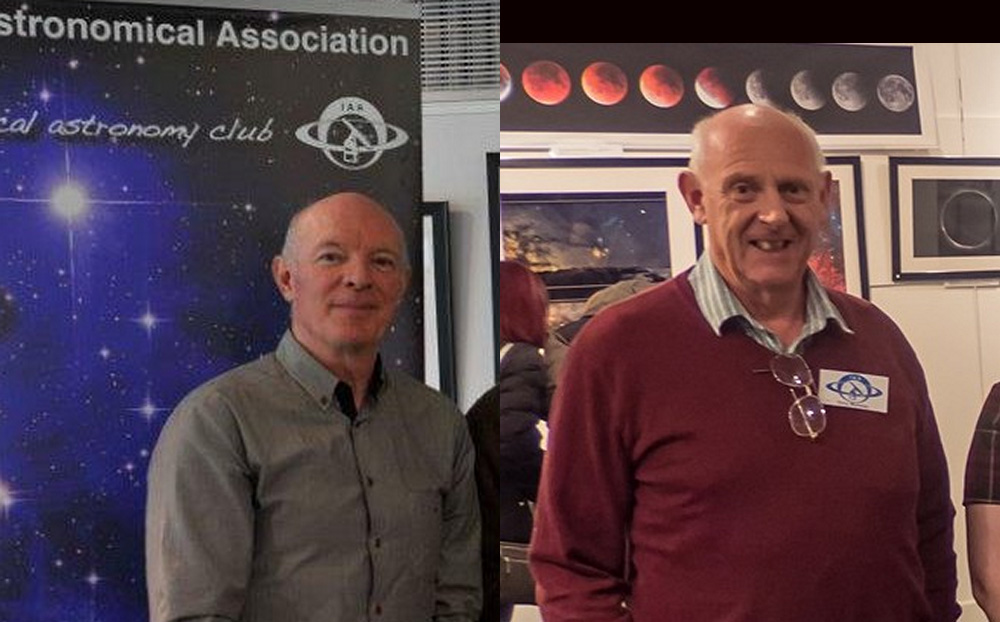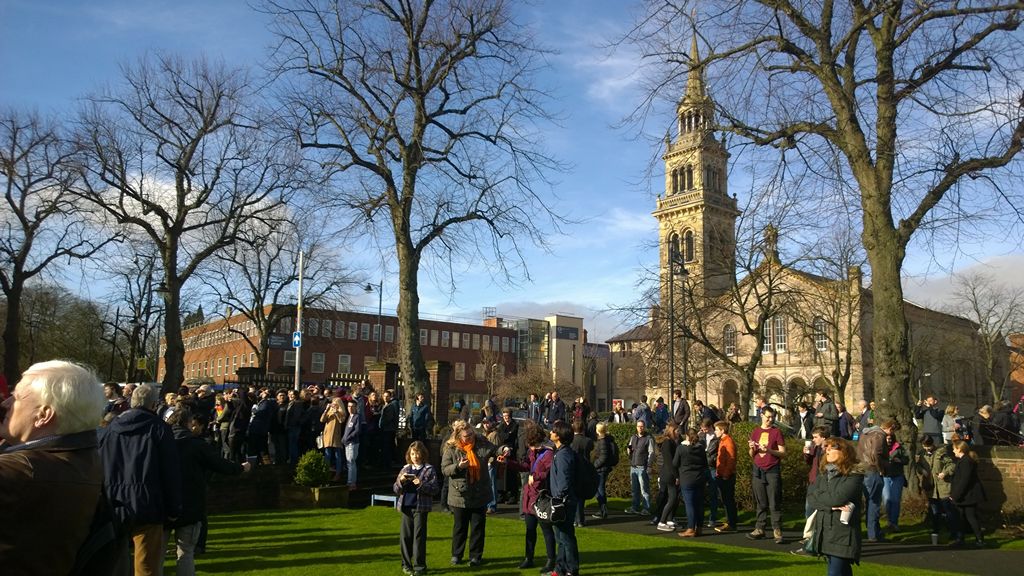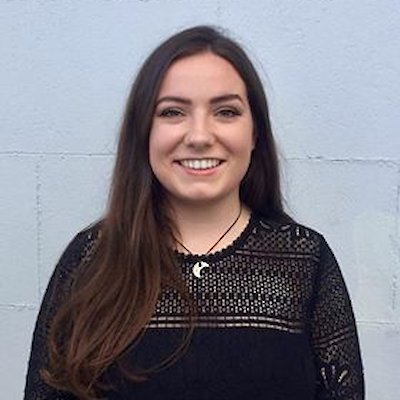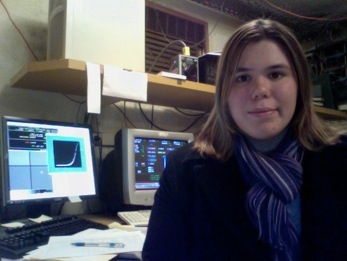This is a new regular fortnightly Webinar in which Terry and Nick discuss the current state of things for about half an hour! Enjoy at japanporn xヴぃでお!
Category Archives: Event
International Dark Sky Week 19th – 26th April
Well it’s International Dark Sky Week starting tonight, so I’ve made a short guide to some objects in the Night Sky this week including Venus, Leo the Lion, the Virgo Cluster and of course the Lyrid Meteor Shower!
Enjoy!
Lecture Weds 4th March – Dr John Quinn (UCD) – “Gamma-ray and Optical Astronomy with VERITAS”
Gamma-rays are the most energetic form of electro-magnetic radiation, produced by some of the most violent events in the universe, such as supernovas remnants and relativistic jets from supermassive Black Holes.
It’s only recently that we’ve developed instruments capable of studying them. The very highest energy rays (in the Tera electron Volt (TeV) range) produce showers of secondary emissions on our site, called Cherenkov radiation, when they stroke our atmosphere.
VERITAS (Very Energetic Radiation Imaging Telescope Array System) in Arizona is one of only 3 state of the art TeV observatories which can study this phenomenon, and this talk will describe how it works and the science it produces. Visit sexsub xxxbeeg.
The Veritas Collaboration is now also using the telescope for optical astronomy, such as fast transients and interferometry, and the talk will also cover this new work.
John Quinn is an Associate Professor in the School of Physics at University College Dublin (UCD) and has been involved in the field of ground-based gamma-ray astronomy for 25 years. His PhD was conducted at UCD, under the supervision of Prof. David Fegan. and as a predoctoral fellow at the Smithsonian Astrophysical Observatory’s Fred Lawrence Whipple Observatory in Arizona, under the supervision of Prof. Trevor Weekes, where the atmospheric Cherenkov technique was pioneered and the first detections of astronomical sources of VHE gamma rays were achieved.
Doors open about 7.15pm. There is free parking available on the campus in the evenings. Admission Free, including light refreshments. We are located in the Bell Theatre, Department of Mathematics and Physics, QUB – Details here….. With thanks to the Astrophysics Research Centre, QUB, for assistance with this event.
Bell Lecture Theatre, Physics Building , QUB, 7.30pm
All welcome. Free admission, including light refreshments.
Astronomy Question Time & Star Watch
Saturday 22nd February, 7:00 pm – 10:00 pm
Suitability: 10 Yrs +
Free.
Do you have a burning question about black holes? Do you want to know more about exoplanets? A panel of world-leading astronomers from Queen’s University Belfast will explore these colossal questions of the universe and so much more! This event will be followed by Astronomers from Queen’s and the Irish Astronomical Association setting up telescopes to give everyone the opportunity to look at stars and nebulae. Please dress warmly!
In the event of poor weather the IAA’s Stardome will be deployed
The main event is in the Larmor Theatre at QUB, observing will be on the lawn outside
Lecture Weds 19th Feb – Laura Murphy (TCD) – “The First Stars in the Universe “
Abstract
Understanding the nature of the first stars and their explosive deaths is key to understanding the early universe and the evolution of distant galaxies. With new facilities such as the James Webb Space Telescope we may soon have the first observations of the earliest stars, but to understand these observations we will require detailed simulations. The first stars were very different to stars that we see today, they were more massive, much hotter and only contained elements formed during the Big Bang, meaning that they would have evolved very differently, and produced more black holes and explosive events. Using stellar evolution modelling, we investigate these first stars for a range of masses up to 120 times the mass of the sun, both rotating and non-rotating. This research sheds new light on the behaviour of the first stars and how they may have impacted their surroundings, particularly in relation to their final fates.
Bio
Laura is a PhD student in Trinity College Dublin studying the first stellar explosions and their progenitors. As an awardee of the IRC postgraduate research award she is a member of the Supernovae and Stellar Evolution research group led by Prof. Jose Groh. Her work aims to understand the nature of the first stars and their explosive deaths as supernovae, with particular emphasis on how rotation affects their evolution. She is also active in outreach and is an executive committee member of WITS (Women in Technology and Science) Ireland.
Doors open about 7.15pm. There is free parking available on the campus in the evenings. Admission Free, including light refreshments. We are located in the Bell Theatre, Department of Mathematics and Physics, QUB – Details here….. With thanks to the Astrophysics Research Centre, QUB, for assistance with this event.
Bell Lecture Theatre, Physics Building , QUB, 7.30pm
All welcome. Free admission, including light refreshments.
Lecture Weds 5th February – Dr Andreas Sander (AOP)
Dr Andreas Sander is currently a Postdoc at the Armagh Observatory and Planetarium (AOP), UK
He previously did his PhD and Postdoc work at the University of Potsdam in Germany and as part of his work he has been allocated telescope time on the HST, CHANDRA, VLT, P200, KECK and JCMT telescopes!
The talk synopsis is as follows……
Rare but important: Why the Universe is shaped by massive stars
Massive stars are quite different than our own Sun. They are rare in numbers, their life is short and their death can be quite dramatic. But these stars, which are more than ten times more massive than our Sun, are driving the evolution of our Universe. Their extreme conditions allow them to breed and distribute heavier elements. Only due to previous generations of massive stars, we now have the elements here on Earth that allow our very own existence. Massive stars also shape their environment, illuminating fascinating nebulae that can become birthplaces for the next generation of stars, and provide the radiation that makes the Universe transparent. Eventually, massive stars collapse into black holes, making them the progenitors of the Gravitational Wave events we are finally able to measure.
But how do we know about the properties and the impact of massive stars? To only way to study stars that are further away than our own Sun is to analyse their light. For massive stars, this is particularly challenging. Requiring detailed computer models, we are only at the beginning of a time, where we can put many puzzling pieces of information together in order to get a glimpse of the bigger picture. My talk will give an outline of the role and the impact of massive stars and the challenge to understand their properties and evolution. I will explain the basic concepts of massive star evolution and highlight the role of the enigmatic Wolf-Rayet stars, which mark a crucial stage on the road to massive black holes.
Doors open about 7.15pm. There is free parking available on the campus in the evenings. Admission Free, including light refreshments. We are located in the Bell Theatre, Department of Mathematics and Physics, QUB – Details here….. With thanks to the Astrophysics Research Centre, QUB, for assistance with this event.
Bell Lecture Theatre, Physics Building , QUB, 7.30pm
All welcome. Free admission, including light refreshments.
Double Lecture Weds 22nd Jan – Terry Moseley and Andy McCrea

Terry Moseley is of course a legend in Irish Astronomy and needs no introduction! He will be talking to us about “The Closest Comet Approaches to Earth”
SYNOPSIS “The Closest Comet Encounters to EarthIt’s widely believed that many comets have impacted Earth during its lifetime, but just how close have comets come to us in recorded history? We’ve seen a close pass to Mars, impacts on Jupiter, and a possible impact on Earth. We’ve also seen some very spectacular and bright comets in the sky, but how close did they come? This talk will review the known atmosphere, look at the mythological and historical background, and consider the effects of a possible future really close pass.”
Dr Andy McCrea is equally well known in Astronomy circles both as a six-year Past-President of the IAA and as proprietor of North Down Telescopes. His talk is entitled “Return to the Moon”
Return to the Moon.
The Apollo 17 NASA astronauts blasted off from the Moon in December 1972, which concluded a curtailed programme of US Moon landings. Andy will review what has been going on in terms of lunar missions since then, and review the current situation, anticipating the NASA-led Artemis missions and proposed landing over the coming period.
Doors open about 7.15pm. There is free parking available on the campus in the evenings. Admission Free, including light refreshments. We are located in the Bell Theatre, Department of Mathematics and Physics, QUB – Details here….. With thanks to the Astrophysics Research Centre, QUB, for assistance with this event.
Bell Lecture Theatre, Physics Building , QUB, 7.30pm
All welcome. Free admission, including light refreshments.
Lecture Weds 8th January 2020 – Dr Chris Watson, QUB

This talk is titled “The Terra Hunting Experiment – finding Alien Earthlike Worlds”
Despite having found more than 4,000 planets around ‘normal’ stars since the initial Nobel prize-winning discovery in 1995, no true Earth-like planet (or Earth-analog) has yet been found. While Earth-size, Earth-mass, and Earth-density planets have been discovered, these are all in tight orbits around their host stars (e.g. Kepler-78b was, at the time of discovery, the exoplanet most similar to Earth in size and mass, but has a ‘year’ lasting just over 8 hours!).
Why have we yet to find an Earth-analog? I will review both the technical and astrophysical challenges of finding another ‘Earth’ with humanity’s current level of technical and scientific expertise. This will naturally explain how this spawned the ‘Terra Hunting Experiment’ – a bold 10-year long intense survey of a select number (~40) solar-type stars to look for the Doppler-wobble signature of an Earth-like planet orbiting in an Earth-like orbit around a solar-type star. Might this reveal, for the first time, some potential homes of E.T.? I’ll finish by providing my own personal opinion on the prospects for the discovery of life – the ultimate goal of such work.
I am a senior lecturer and head of the extrasolar planet research group, as well as Deputy Head of the School of Mathematics and Physics at Queen’s University Belfast. I arrived here in October 2008, following on from a PPARC Postdoctoral fellowship held at Sheffield University (working on binary stars). Now my main interests are in developing methods of reducing the impact of stellar inhomogenities (such as starspots and convection) on the detection and characterisation of extra-solar planets. I am also interested in how hot Jupiters ended up where they are, as well as characterising their atmospheres (QUB was only the 3rd group to recover a z-band secondary eclipse, for example). My activities include involvement in a number of international projects, and I am one of the UK Co-Investigators of the HARPS-N project, as well as Co-Principal Investigator of the Next Generation Transit Survey (NGTS). My research has attracted major national and international press attention, with several global press releases, documentaries in the UK and further afield (such as Australia) with typical viewership measured in the millions click here and find roof tiles in san diego ca. I have also written ‘expert’ articles for the BBC News, as well as numerous interviews and press articles across the UK/Ireland and globally.
Doors open about 7.15pm. There is free parking available on the campus in the evenings. Admission Free, including light refreshments. We are located in the Bell Theatre, Department of Mathematics and Physics, QUB – Details here….. With thanks to the Astrophysics Research Centre, QUB, for assistance with this event.
Note this is in a different Lecture Theatre in the Main QUB building opposite the Physics Dept – to the left from the end of the Car park QUB, 7.30pm
All welcome. Free admission, including light refreshments.
IAA Double Public Lecture, Wednesday December 18th, 7.30 p.m.
1.) “The Cosmic Compass” by IAA President, Brian Beesley.
Summary: Part 1 is a (non technical) description of how astronomy has been used to find where you are and what direction you’re moving in from ancient times up to the Apollo missions. Part 2 is a description of the basics of satellite navigation together with how this technology developed from WWII radio navigation and blind bombing aids with starscommesse.it.
(2) “Deep Sky Astrophotography with a Small Telescope.” by IAA C/M Adam Jeffers
Summary: This talk will outline the equipment, stages and software involved in capturing and processing an image of a deep sky object from your back garden.
Doors open about 7.15pm. There is free parking available on the campus in the evenings. Admission Free, including light refreshments. We are located in the Bell Theatre, Department of Mathematics and Physics, QUB – Details here….. With thanks to the Astrophysics Research Centre, QUB, for assistance with this event.
Bell Lecture Theatre, Physics Building , QUB, 7.30pm
All welcome. Free admission, including light refreshments.
Lecture Weds 20th Nov 7:30pm – Dr Meg Schwamb (QUB) “New Perspectives Big and Small of the Trans-Neptunian Region”
Pluto resides beyond Neptune orbiting in a sea of small icy bodies in the Trans-Neptunian Region. These distant objects are truly the fossils relics left over after our Solar System’s formation. Digging into the orbits, dynamics, and physical properties of these bodies provide new insights and windows into the origins and past history of the outer Solar System. This includes hints of a possibly unseen planet or an event long-since erased from the rest of the Solar System with http://Insanejackpot.com. In this talk, I’ll explore the changing views of the outer Solar System from the discoveries of ground-based surveys to the New Horizons fly-bys of the Pluto system and Arrokoth.
Bell Lecture Theatre, Physics Building , QUB, 7.30pm
All welcome. Free admission, including light refreshments.






